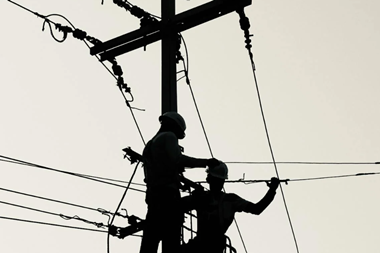Infrastructure is considered by some as a subset of real estate, and by others as part of their private equity allocation or ‘alternatives' bucket. Christine Senior looks at how increasingly investors treat it as a asset class in its own right
Infrastructure is something of a new kid on the block for institutional investors, but it does share some characteristics with existing asset classes. It is often compared to both real estate and private equity. Some institutional investors may group it with one of those in their portfolio, but as it becomes a more established element in a portfolio of alternatives, infrastructure is increasingly being considered as a separate asset in its own right.
Five or 10 years ago infrastructure was regarded as property with a bit more growth, says Peter Meany, head of global infrastructure securities at First State Investments. "As the scale of the opportunity has increased and the number of players offering infrastructure funds has increased, it's become much more mainstream," he says.
"Certainly if you look at Australian, Canadian and Dutch pension funds and US endowment funds they have separated out infrastructure at somewhere between a 5% and 20% dedicated allocation.
The size of the opportunity now justifies a separate allocation. I would say the majority of funds now have it within an alternatives basket broken down into property, infrastructure, private equity, timber and so on."
According to a recent report by the research institute Preqin, 47% of infrastructure investors separate infrastructure out, while 43% include it in private equity and 10% in "real assets".
This is somewhat echoed by the research conducted by specialist infrastructure investment manager Capital Innovations. Through interviews with 550 pension funds based in North America, Latin America, Europe, and Asia, the company found that 50% of investors regard infrastructure as a separate asset class, while 44% see it as part of private equity and only 6% as part of real assets or real estate. "It has gone from predominantly private equity and for some investors real estate, and now it's an asset class in its own right," says CEO of Capital Innovations Michael Underhill.
Consultant Mercer also regards infrastructure as distinct from real estate and from private equity, and as a result has its own infrastructure team. But clients do not necessarily take the same view, says principal Rob Treich."As long as they are aware of the risk-return characteristics of the asset and how it fits into the overall portfolio, where they put it in a particular bucket is not the main issue," he says.
By their nature infrastructure assets do extend across a wide spectrum of risk and return. At the least risky end of the range they are well established entities, such as utilities companies, hospitals or toll roads in developed countries. They may be monopolies or quasi-monopolies, and generate regular, relatively secure cash flows that tend to keep pace with inflation. But at the other end of the scale infrastructure comprises greenfield developments - for instance a new airport in the developing world - which are inherently more risky and have more in common with private equity investment.
Tony Rocker, head of the alternative investment group at KPMG, describes the classic view of infrastructure investments: "In the classic sense, infrastructure is a well-established asset that has a contracted long-term cash flow either through a monopoly or through a long-term contract or series of contracts, and the variability of those flows is not great. Infrastructure is medium to low risk, therefore medium to low return in its purest sense. But there is a spectrum of infrastructure, from something that looks more like a lease to something that is more akin to what private equity would invest in."
Arthur Rakowski, executive director of Macquarie Capital Funds, believes that infrastructure, in fact, shares more characteristics with private equity than real estate. "To the extent you can make a general statement I would say by and large it is closer to private equity," he says.
"There are many differences between owning a building and owning a water company, and very different management issues - valuing the company and developing the business. If you own a building and you lease that building, basically the business is managing the tenants. That's very different from running a water company with 4,000 employees or running a pipeline. Where the similarity arises is that both these asset classes produce a very strong cash flow, and as a result are very focused on current income."
One way infrastructure marks itself out from real estate is that quite often it is a monopoly, which from an investor's perspective has some key benefits. There is a certain level of government involvement in the running of it, with strict regulation that provides stability and predictability for the business, and imposes standards of responsibility. On the downside this could turn into political interference or sudden rule changes that affect the running of the company.
From an investors' perspective infrastructure has the advantage of low correlation with mainstream assets like equities and fixed income. But it also shows low correlation with real estate - yet another reason to regard it as a separate asset class. The retail sector of real estate is dependent on purchasing power and the state of the economy; office real estate is linked to the employment market. Infrastructure, on the other hand, shows more resilience to the ebbs and flows of economic growth.
"The point about infrastructure, which makes it a more reliable risk even if purchasing power falls, is that people still use water, still use electricity and drive cars," says Rocker. "They stop going out to shop but by and large still turn the radiators on."
As monopolies, many infrastructure assets do not face the same risk of an influx of competitors into the market as do real estate assets. And Meany says there are higher growth opportunities, both organic and through acquisitions. "It requires a different expertise to analyse infrastructure assets compared with property or other alternatives," he says. For Treich, it is the security and predictability of cash flows that make infrastructure different from real estate.
"One of the things we like most about classic infrastructure is that the cash flows should be secure but also secure over the long term, paid generally by very high-quality counterparties. So though long leases in real estate might confer some of the same characteristics, the degree of security would be different. Your cash flows are more secure in most forms of infrastructure than they would be in real estate."
The OECD has said that countries will need to take urgent action to tackle infrastructure development over the next 25 years in order to sustain economic growth. With the public sector alone unable to finance the investment needed, other sources of finance will be required. The OECD highlights public-private partnership and participation by pension funds and other large institutional investors as possible solutions to financing much needed projects. Opportunities for pension funds investment therefore look likely to increase in future.
Already in the UK alone the number of infrastructure funds has surged in the last few years. While five years ago there were fewer than five infrastructure funds, now there are 50 or more. More investment vehicles translate into more institutional investment. "The amount pension funds have to spend has gone up exponentially," says Rocker.
"Current projections show pension funds are going to allocate more to alternatives and more to infrastructure. But we are talking about a very small market at the moment. The total equity cheque for these funds is about US$180bn (€131bn). Compared with equity in real estate it's small."
As more investors take an interest in infrastructure, the diversity of the funds is also increasing. "Funds are becoming specialised, so you have sector funds that focus on Brazilian infrastructure only, or the Middle East and North Africa, different opportunities that are country-specific, or funds that are just greenfield or just brownfield," says Underhill. "With a larger universe of funds you can create a more diversified portfolio."
These funds can encompass different risk-return categories, depending on their focus, and in this respect are taking cues from real estate categories: from core and core-plus to valued-added and opportunistic. The range extends from core investments such as established utility companies in western Europe to value-added such as greenfield assets in a developing country.
"You expect people to have the bulk of their portfolio in the core space, and as they develop their portfolio, typically having satellite-type commitments to more value added and opportunistic investments," says Rakowski.
One of the factors that mitigates against considering infrastructure as an established mature asset class in its own right is its lack of accepted benchmarks. Meany says the few that have emerged have consisted of an index of direct infrastructure funds and their performance, but they have been narrowly based and lack a track record.
Ontario Teachers Pension Plan (OTPP) is one of a handful of pension funds to invest directly in infrastructure.
It does this through a particular segment of its portfolio devoted to inflation sensitive investments. So infrastructure as a distinct investment category sits alongside real return bonds, real estate (which is managed by a subsidiary company) and commodities within a portfolio that accounts for 36% of the plans' total C$105.8bn (€67.6bn) assets.
The infrastructure portfolio, valued at C$8.8bn at December 31 2007, is invested across a broad range of assets with a wide geographical dispersion. OTPP has stakes in power generation, with power plants around the world, as well as water and wastewater services in the UK, China and Chile; gas distribution in the UK; airports in Birmingham and Sydney; toll roads in Europe and Canada, and port facilities in Canada and the US.
Often working with partners, its deals are often large, involving senior and subordinated debt and public or private equity. The latest project is a joint project with Morgan Stanley to acquire Chilean electricity company SAESA, worth US$870m (€698m), concluded earlier this year.
OTPP began investing in infrastructure in 2001, the aim being to generate stable long-term returns to help pay pensions that rise in line with inflation. The main reason for investing in infrastructure is therefore its inflation-matching properties. "Our CEO refers to it as ‘bonds on steroids'," says Deborah Allan, spokeswoman for OTPP.
But what is behind the decision to build an in-house team, which is fairly unusual? "You have to be a large fund to be able to do so," says Allan. "In the long run it saves you money because we have captive in-house talent; we are paying our own talent for our own investments. We look for a small number of large investments as opposed to a large number of small investments, so it's more cost-effective to do so ourselves. We do it because it's less labour intensive and ultimately we believe it will have a better payback."
OTPP started by investing in funds, before developing its own in-house infrastructure investment capabilities. But the sheer size of infrastructure transactions rules out the in-house route for many pension funds.
"Only a few, such as Ontario Teachers, and Canadian Pension Plan, have the capacity or capital to invest a large amount at one time," says Meany. "It's probably taken them five to 10 years of investing in funds to develop expertise and in-house research to analyse opportunities. Very few go it alone. Typically, large transactions are done in consortiums where a pension fund will team up with an operating company and a financier to bid."
OTTP, Canadian Pension Plan and some of the big Dutch funds are the main direct investors, but it remains a minority. "They have to be committed, they have to recruit people who understand infrastructure and compete in what is a very competitive market to go and buy these," says Rocker. "Some of the assets are complex, large businesses, some of them employing several thousand people, with many thousands of contracts and sub-contracts to manage. That is the main blockage for pension funds to invest direct."
Vervoer, the Dutch pension fund for private road transport, regards infrastructure as an asset class in its own right, making a small allocation of 1%. Vervoer has confined its investment to a small, specialised sector, investing in cable networks, not the operational side but the actual cable in the ground.
"We are seed investors in a fund," said Martine Menko, investment officer at Vervoer. "It's not managed through Goldman Sachs, who is our fiduciary manager for the rest of the portfolio. We choose the managers."












